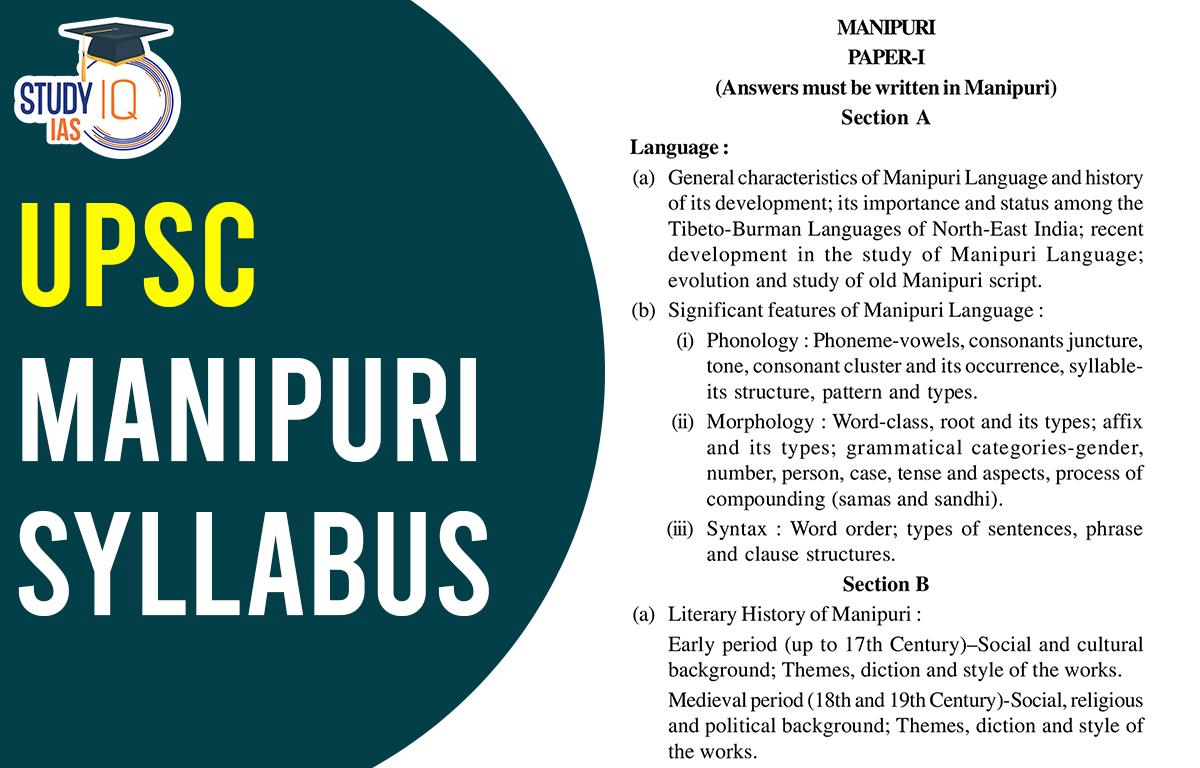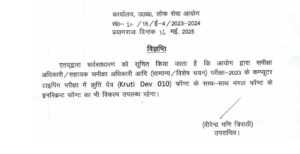Table of Contents
Candidates must select one optional topic for the UPSC mains exam. This is very important in determining an aspirant’s ranking in the IAS Examination. Current statistics indicate that the success rate of Literature disciplines is increasing with time. The state of Manipur in North East India speaks Manipuri, a Tibeto-Burman language. It is also utilised in Bangladesh and Myanmar’s neighbouring regions. One of the official languages of the Union, Manipuri, is listed in the eighth schedule of the Indian Constitution.
UPSC Manipuri Literature Syllabus
UPSC candidate is considering taking Manipuri Literature as an optional subject, and the UPSC Malayalam Literature Syllabus should be well-researched. Manipuri Literature is one of the UPSC’s optional subjects for the Mains exam. Manipuri is one of the Union of India’s 22 official languages. If applicants select Manipuri Literature as an optional subject, there are two papers on it in the Mains exam, which is a component of the IAS Exam.
Candidates may select Manipuri literature as an elective topic through the UPSC. UPSC Manipuri Literature Syllabus is one of the UPSC Mains exam’s optional subject lists. This article provides you with complete information regarding the UPSC Manipuri syllabus that’s required to prepare for the UPSC Syllabus.
UPSC Manipuri Literature Optional Syllabus
The UPSC Mains exam has two papers of 250 marks each for Manipuri Literature, for a total of 500 marks for the Optional Subject. The topics covered in the UPSC Manipuri Optional Syllabus are summarised here.
| Manipuri Literature Syllabus for UPSC | ||
| Papers | Topics | Marks |
| UPSC Manipuri optional Syllabus Paper-1 | Language Literary History of Manipuri Manipuri Folk Literature Aspects of Manipuri Culture | 250 |
| UPSC Manipuri Literature Syllabus Paper-2 | Old and Medieval Manipuri Literature Modern Manipuri Literature | 250 |
UPSC Manipuri Literature Syllabus Paper 1
The UPSC Manipuri Literature Syllabus Paper 1 is divided up into Sections A and B. The evolution, significance, and characteristics of the Manipuri language are covered in section-A. Features of Manipuri Culture, Literary History of Manipuri, and Manipuri History make up Part B. The UPSC Manipuri Literature Syllabus Paper 1 is provided below.
| Section A | |
| Language |
|
| Section B | |
|
|
UPSC Manipuri Literature Syllabus Paper 2
The UPSC Manipuri Literature Syllabus Paper 2 demands a fast hand reading of texts and intends to assess the candidates’ critical skills. It is also split into two portions, Sections A and B. Old Manipuri Literature and Medieval Manipuri Literature are included in section A. Part B is dedicated to modern Manipuri literature, including poetry, epics, novels, short stories, and prose. The whole UPSC Manipuri literature syllabus paper 2 is provided here.
| Section A: Old and Medieval Manipuri Literature | |
| (a) Old Manipuri Literature |
|
| (b) Medieval Manipuri Literature |
|
| Section B: Modern Manipuri Literature | |
| Poetry, Epic and Drama | |
| (I) Poetry | a. Manipuri Sheireng (Pub) Manipuri Sahitya Parishad, 1998 (Ed.)
b. Kanchi Sheireng. (Pub) Manipur University 1998 (Ed.)
|
| (II) Epic: |
|
| (III) Drama: |
|
| Novel, Short-story and Prose | |
| (I). Novel: |
|
| (II). Short-story: | a. Kanchi Warimacha (Pub) Manipur University 1997(Ed.)
b. Parishadki Khangatlaba Warimacha (Pub) Manipuri Sahitya Parishad 1994 (Ed.)
c. Anouba Manipuri Warimacha (Pub) The Cultural Forum Manipur 1992 (Ed.)
|
| (III) Prose | a. Warenggi Saklon [Due Part] (Pub) The Cultural Forum Manipur 1992 (Ed.)
b. Kanchi Wareng (Pub) Manipur University, 1998 (Ed.)
c. Apunba Wareng (Pub) Manipur University, 1986 (Ed.)
d. Manipuri Wareng (Pub) The Cultural Forum Manipur 1999 (Ed.)
|
This article discusses the complete UPSC Manipuri Syllabus for UPSC/IAS. Candidates can download the PDF in this article. For more details related to UPSC Examination; students can visit the official website of StudyIQ UPSC Online Coaching.


 UPPSC RO ARO Exam Date 2025 Out: Typing ...
UPPSC RO ARO Exam Date 2025 Out: Typing ...
 Maharashtra Bill to Curb Urban Naxalism,...
Maharashtra Bill to Curb Urban Naxalism,...
 International Maize and Wheat Improvemen...
International Maize and Wheat Improvemen...





















